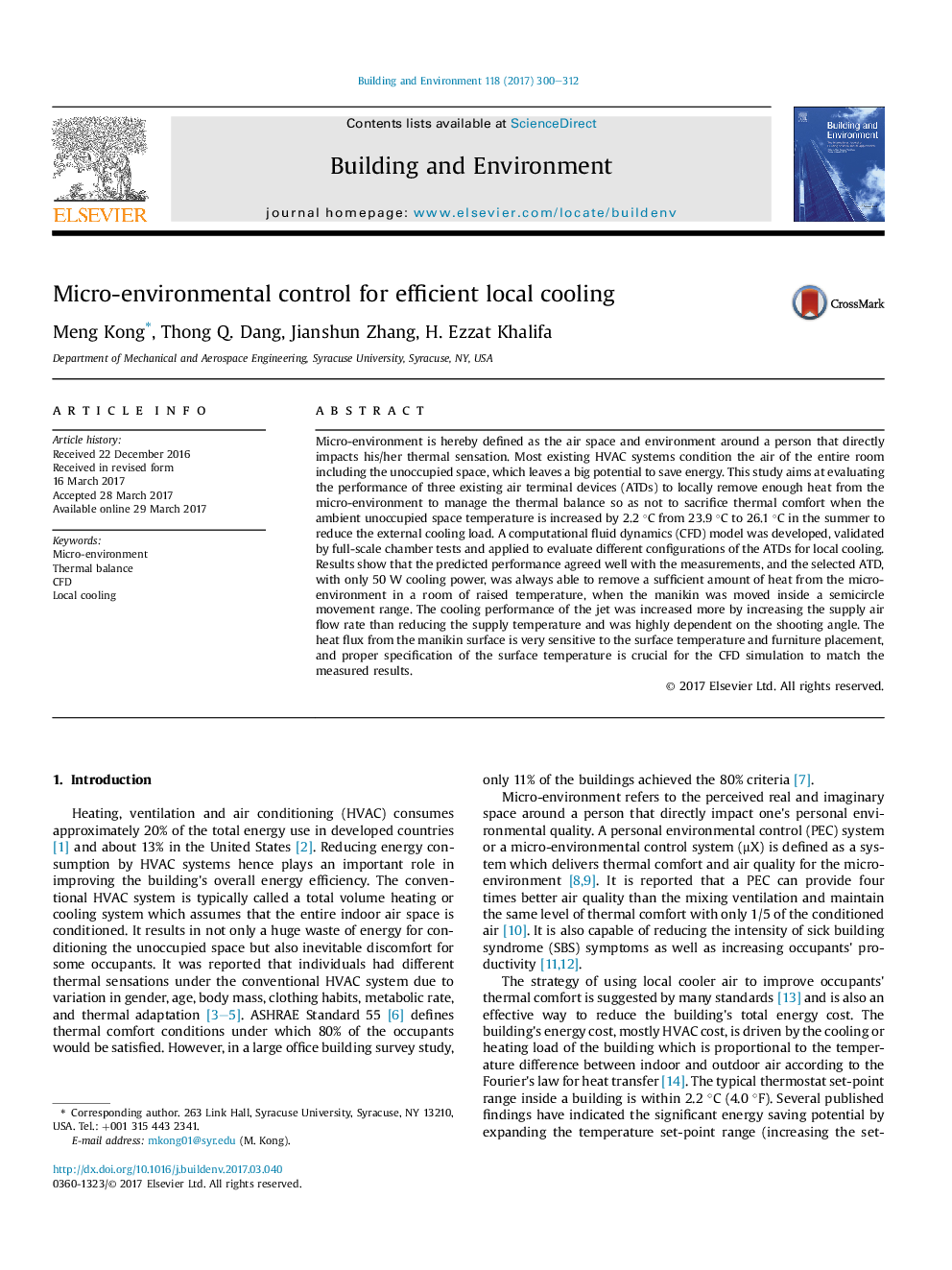| کد مقاله | کد نشریه | سال انتشار | مقاله انگلیسی | نسخه تمام متن |
|---|---|---|---|---|
| 6479284 | 1428374 | 2017 | 13 صفحه PDF | دانلود رایگان |
• A CFD model for predicting the heat loss of the manikin was developed and validated.
• The CFD model of the jet cooling the manikin was validated for the first time and agreed well with the experiment.
• The cooling performance of three ATDs were tested at different distances and different shooting angles.
• All the three ATDs were able to cool the manikin sufficiently while the ambient room temperature was elevated by 4 °F.
• The heat loss from the manikin was very sensitive to the uniformity of its surface temperature and furniture placement.
Micro-environment is hereby defined as the air space and environment around a person that directly impacts his/her thermal sensation. Most existing HVAC systems condition the air of the entire room including the unoccupied space, which leaves a big potential to save energy. This study aims at evaluating the performance of three existing air terminal devices (ATDs) to locally remove enough heat from the micro-environment to manage the thermal balance so as not to sacrifice thermal comfort when the ambient unoccupied space temperature is increased by 2.2 °C from 23.9 °C to 26.1 °C in the summer to reduce the external cooling load. A computational fluid dynamics (CFD) model was developed, validated by full-scale chamber tests and applied to evaluate different configurations of the ATDs for local cooling. Results show that the predicted performance agreed well with the measurements, and the selected ATD, with only 50 W cooling power, was always able to remove a sufficient amount of heat from the micro-environment in a room of raised temperature, when the manikin was moved inside a semicircle movement range. The cooling performance of the jet was increased more by increasing the supply air flow rate than reducing the supply temperature and was highly dependent on the shooting angle. The heat flux from the manikin surface is very sensitive to the surface temperature and furniture placement, and proper specification of the surface temperature is crucial for the CFD simulation to match the measured results.
Journal: Building and Environment - Volume 118, June 2017, Pages 300–312
